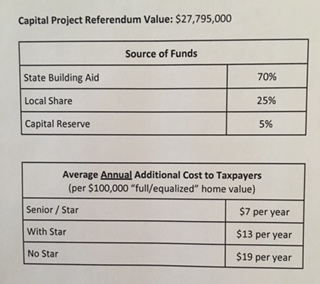 As a school administrator, I’ve been writing about school leadership here since 2006. Nothing been as challenging to me as a person as dealing with the loss of 7-year-old SGI student Alyssa Hearn in a tragic school bus accident 12 days ago. As difficult as it is to write about, it’s important that we communicate about this horrible event so that we can continue to support Alyssa’s family, one another, and our community as a whole.
As a school administrator, I’ve been writing about school leadership here since 2006. Nothing been as challenging to me as a person as dealing with the loss of 7-year-old SGI student Alyssa Hearn in a tragic school bus accident 12 days ago. As difficult as it is to write about, it’s important that we communicate about this horrible event so that we can continue to support Alyssa’s family, one another, and our community as a whole.
Friday, November 4 was the single worst day in a young family’s life and it was the single worst day of my career and that of many others. No parents ever imagine that a child will predecease them. And no teacher wants to think that a healthy 7-year-old will get on the bus and not return to school. The grief of Alyssa’s teachers in the days following the accident was an obvious result of how much our teachers love our students. The bus drivers and counselors and school administrators who came together with our local clergy and families on Saturday and then again on Sunday in Springville’s community vigil, showed the remarkable strength of our community. The love and support shown for one another in our community over the past 12 days has reminded me and many others of all that is right with our world in the face of unspeakable tragedy.
As the superintendent, I feel a deep sense of obligation to determine what occurred on November 4th and to make sure that a similar tragedy does not occur in the future. As so many of our parents are asking, how does this happen? We are all working cooperatively to determine what happened, and to see what we can do to prevent similar tragedies in the future. The Erie County Sheriff’s Department is continuing its investigation of the accident. At the same time, the NY State Education Department has already been in District to evaluate the accident and determine if there is anything it can incorporate into school bus safety and training for all drivers across the State. And the District is conducting its own internal investigation into what happened. I pledge that we will look at that day and accident from every imaginable angle to learn if there was anything we could have done differently, and what the District may do to attempt to prevent a similar accident in the future.
I am incredibly grateful to this community for the ways in which everyone has reached out to love, honor and support Alyssa’s family and our entire school community. There’s no administrative coursework or training for how to respond to such a horrible accident. As a leader of the District I have sometimes felt like I was fumbling in the dark these last 12 days, making decisions from a position of caring and love while hoping we get it right.
Thank you to each and every person who has reached out to me or others in our school family to make a connection and to help us find our way out of the dark. I appreciate it more than I can adequately express here, and ask for your continued assistance as we work together to support Alyssa’s family and the entire community. #springvillestrong
